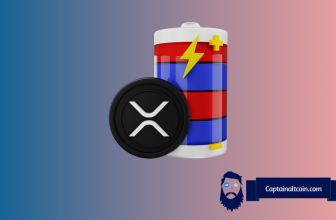It’s been a while since we spoke about the topic of mining centralization and 51% attacks, but that doesn’t mean that the issue evaporated. In fact, it’s quite the opposite. Looking at the data provided by coin.dance we can notice that BTC.com and AntPool, two of the biggest mining pools in the world, accounted for 26.4% and 16.1% of total Bitcoin blocks that were mined during the last week. If these pools were operating separately, this wouldn’t have been such an issue. However, these two pools are owned and operated by Bitmain, the Chinese hardware producing behemoth, and this does raise quite a few alarm bells.
Bitmain currently owns three mining pools: BTC.com (26.1% of the blocks produced), AntPool (16,4% of the blocks produced) and ConnectBTC (0.2% of the blocks produced). When you add these together, we will get the number of 42.7%. This means that almost a half of the network’s hashing power is currently under control of a single, centralized entity. The two big pools also control about one fifth of Bitcoin Cash’s total hash rate.
These numbers aren’t to be joked around with, as we are all aware of the concept of a 51% attack. For those of you that have been living under the nocoiner rock during the last few years, a 51% attack happens when a single entity controls more than a half of the network’s hash rate and decides to use it for malicious means. He could straight up decide to undo transactions by beginning to mine from a point in the past where the transactions haven’t been added to the blockchain. He can also lock-out the rest of the network by denying them the ability to mine and add their own blocks to the chain. All in all, it’s bad.
While having control over this much network resources doesn’t mean that the “holder” will become malicious and take advantage of that, it does create a centralized weak point that goes against the principles of cryptocurrency. And Bitmain has a history of shady behavior in the space. The company is, the sole investor in ViaBTC, which controls about 9.1 percent of the network’s total hash rate. According to a bitcoinmagazine report, ViaBTC has previously exhibited behaviors which directly benefited Bitmain; however both teams have denied any collusion. Some sources believe that Bitmain has a similar “unofficial” relation with BTC.TOP, which controls 11.3 percent of the total network hash rate. This was of course denied as well.
Interested in pool mining? Check out the leading Genesis mining platform and our review of it.
As of now, no one can tell exactly how much control Bitmain has over Bitcoin’s total hash rate. No official data on the structure of these mining pools exists so it is possible that most of it comes from individual miners. It is also very possible that a company which designs and produces ASIC miners – devices capable of blowing regular mining GPU/CPU based rigs out of the water – does in fact own more than 50% of the network’s hash power. A similar event happened back in 2014, when Ghash (now not operational) mining pool briefly gained control of over 51% of the network. They faced immediate backlash from the community and reduced their hash rate by encouraging miners to switch to other projects.
Ultimately, peer pressure like this could help solve the issue. Since Bitmain is thinking of becoming publicly traded, they will be forced to open their dealings to the general public. More details will be known then and a proper reaction will definitely follow. The community is already looking to provide solutions to the centralization issues, with a protocol named BetterHash being considered among the better ones. But for now, the centralization issues will remain unsolved.








so what? clickbait title